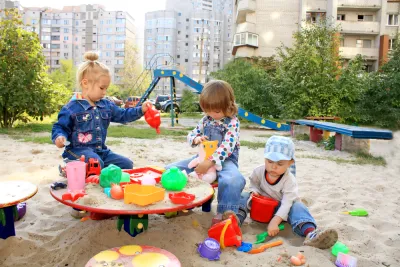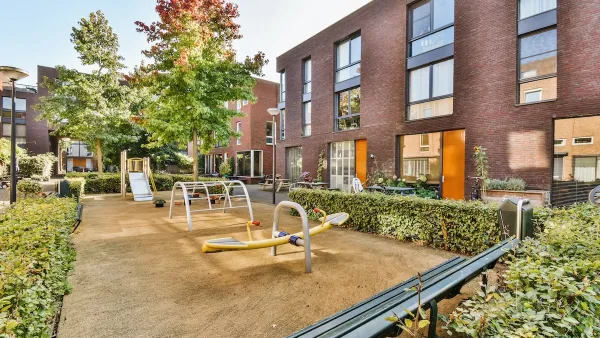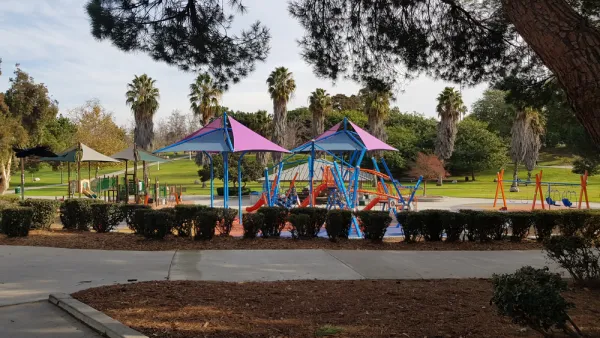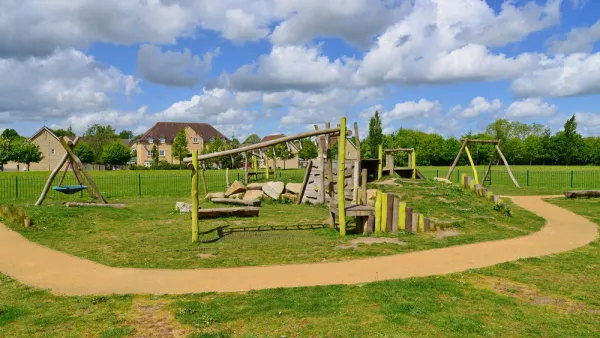Many rankings try to tell parents where the best places are to raise their kids. But measures that focus solely on narrow criteria like safety and schools often ignore the benefits of diverse, vibrant urban environments.

All parents want safe neighborhoods, nice parks, and good schools for their kids. But, sometimes, the places that offer those amenities are often lacking in many other attributes that help kids grow up smart, healthy, and happy. The blog Family Friendly Cities takes to task some of the common measures of "family friendliness" and argues that urban environments, which might score low in many categories, are often better for kids than high-scoring suburbs.
A safe neighborhood would seem to be a prerequisite for family life. But low-crime is not always synonymous with safe. While some neighborhoods may have little violent crime, they may yet be susceptible to the violence of automobile accidents—not to mention the other health effects of auto dependence. In those cases, "what we are likely to find is that many of our beloved and highly ranked sprawl communities wouldn’t rank so highly with their frequent auto collisions, lack of sidewalks and unsafe speed limits."
Low housing costs, and, therefore, the opportunity to live in large spaces would also seem to favor families. But high transportation costs, plus long hours spent in the car, in distant, low-density suburbs can offset what may seem like major savings on rent or mortgages. Similarly, kids in cities can get their education at museums and libraries even if schools are not ranked so highly. And the opportunities for social interaction can be just as valuable for kids as they are for adults. "If we are to truly assess whether a city is child and family friendly then we must acknowledge play and access to play as essential. This includes proximity to residences and the ability to access a diverse range of opportunities for recreation and play."
FULL STORY: What the 'Best Cities for Families' Rankings Get Wrong

National Parks Layoffs Will Cause Communities to Lose Billions
Thousands of essential park workers were laid off this week, just before the busy spring break season.

Retro-silient?: America’s First “Eco-burb,” The Woodlands Turns 50
A master-planned community north of Houston offers lessons on green infrastructure and resilient design, but falls short of its founder’s lofty affordability and walkability goals.

Delivering for America Plan Will Downgrade Mail Service in at Least 49.5 Percent of Zip Codes
Republican and Democrat lawmakers criticize the plan for its disproportionate negative impact on rural communities.

Test News Post 1
This is a summary

Test News Headline 46
Test for the image on the front page.

Balancing Bombs and Butterflies: How the National Guard Protects a Rare Species
The National Guard at Fort Indiantown Gap uses GIS technology and land management strategies to balance military training with conservation efforts, ensuring the survival of the rare eastern regal fritillary butterfly.
Urban Design for Planners 1: Software Tools
This six-course series explores essential urban design concepts using open source software and equips planners with the tools they need to participate fully in the urban design process.
Planning for Universal Design
Learn the tools for implementing Universal Design in planning regulations.
EMC Planning Group, Inc.
Planetizen
Planetizen
Mpact (formerly Rail~Volution)
Great Falls Development Authority, Inc.
HUDs Office of Policy Development and Research
NYU Wagner Graduate School of Public Service





























